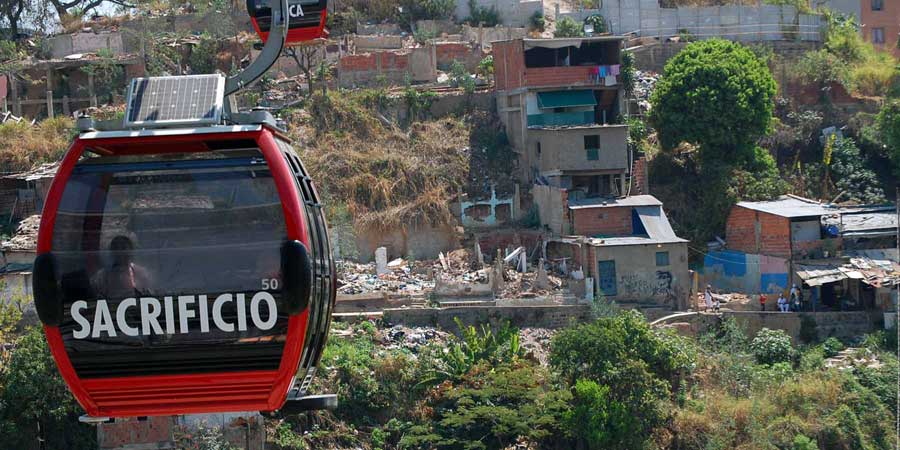The issue of energy has come up a lot when we talk about urban cable systems — and for a good reason. If cable is going to succeed as the modern, comfortable, city transit technology it claims to be, then such amenities as heating, air conditioning, video screens, wifi, and two-way communication systems are going to have to be standard features.
For most of their existence, gondola were not heated, cooled, or souped-up in any way because frankly, there was no need. If you’re skiing outside all day you don’t exactly want to step into air conditioning and heating is not necessary since you’re all bundled up and only inside for a few minutes at a time. But as cable moves into the urban realm, the issue of power becomes increasingly more significant.
Can cabins be heated and cooled?
Yes. For example, London’s new Emirates Air Line cable car has air conditioning. In fact, we’ve know that it was possible for a while, having had this discussion before, we just weren’t sure how.
So how do cabins get power?
First off, definitely not from the small solar panels seen on the roof of some gondolas. Since gondola cabins aren’t connected to a power source, heating and cooling, etc, is not as straight forward as say, in a subway. But this doesn’t mean it can’t be done.
Last week an article came out about how the Emirates Air Line cable car in London utilizes ultracapacitors to provide power to each cabin. So there we go, voilá.
But what does that mean and how does it work?
Ultracapacitors are like batteries in the sense that they both store energy. A capacitor, on the other hand, unlike a battery, can charge and discharge energy very, very quickly (like in a matter of seconds). In the case of the London gondola cabins,
“48V ultracapacitor modules fitted on top of each car [to] enable split-second, rapid energy charging of the modules on reaching the charging stations located at both turnaround points.”
Capacitors have a longer lifespan so you can repeat this process way more than with a battery — in this case, up to one million charge/discharge cycles — and they require little to no maintenance.
The rapid charge is key because it means that the capacitors can charge as the cabins pass through stations. A battery, on the other hand, would need a much longer charge period. Since the capacitor is continually charged through out the day, its physical size can be reduced. For a comparable battery system that would recharged at night, the sheer amount of batteries needed for each cabin would probably be far too heavy and too costly to be practical.
The ultracapacitors installed in the Emirates Air Line cable car were manufactured by Maxwell Technologies. The capacitors are a green technology that use electric fields, rather than chemical reactions, to store energy. The Maxwell 48V modules are the same capacitors used in hybrid buses and construction equipment. They can allow for high bursts of power needed to accelerate or to lift a heavy load (opposed to a gradual loss cruising or lowering a load) and they can quickly recapture energy from braking.
In conclusion, yes, gondolas/cable cars/aerial cable transit cabins can be individually supplied with enough energy to power temperature regulators, multi-media screens, and all the lighting necessary for your ultra-comfortable, ultra-modern, and ultra-fun cable experience. You just need to add ultracapacitors to the top of each cabin to charge everything up in the station and you’re good to go.




2 Comments
Your quote mentioned this, but I just wanted to make it more clear. The reason ultracaps would be used compared to batteries isn’t because they can discharge quickly (they’re not lifting heavy loads, just running little fans or electronics), but because they can charge quickly. Really quickly. I assume this charging is done at the stations.
exactly